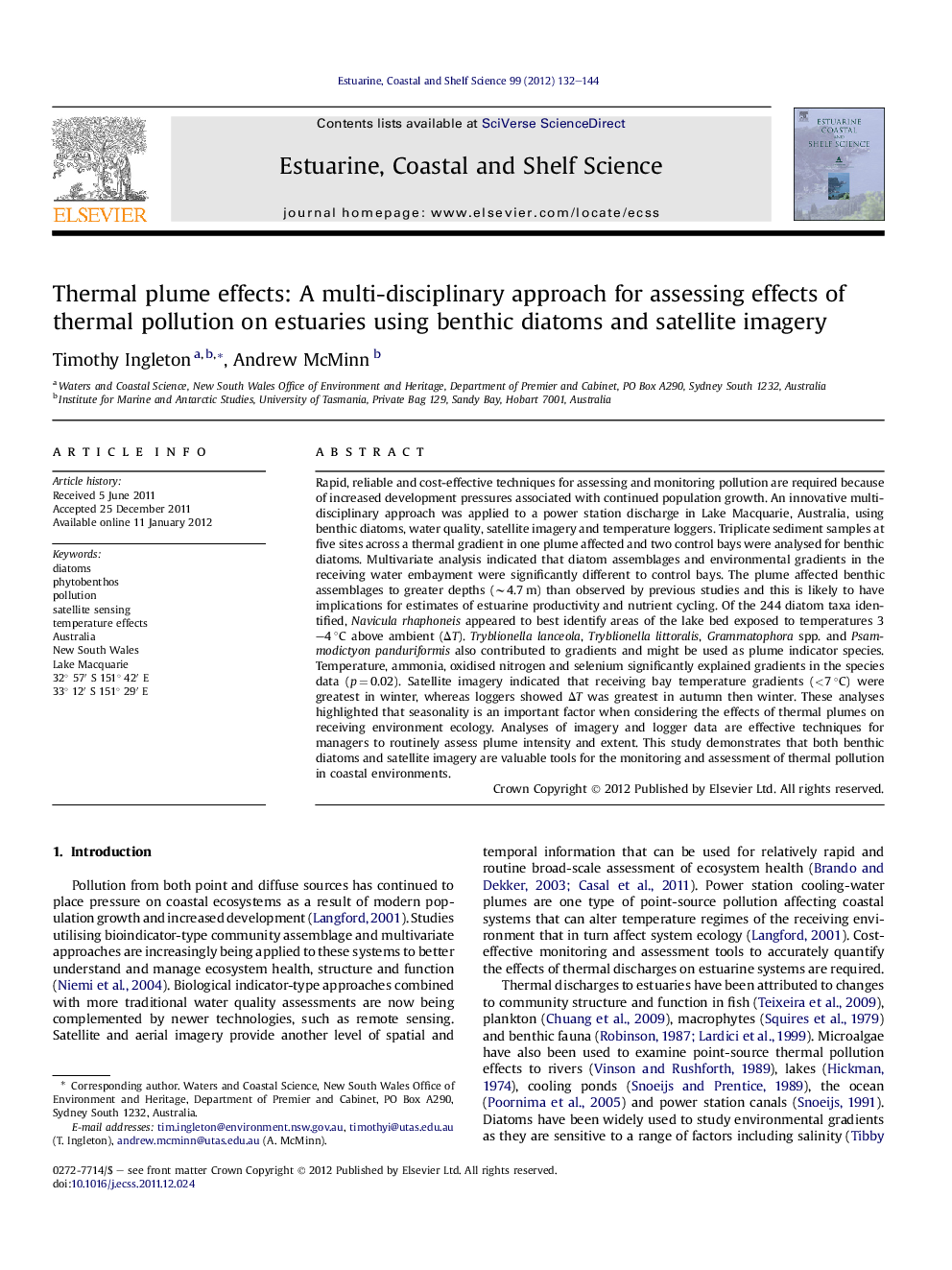| Article ID | Journal | Published Year | Pages | File Type |
|---|---|---|---|---|
| 4540379 | Estuarine, Coastal and Shelf Science | 2012 | 13 Pages |
Rapid, reliable and cost-effective techniques for assessing and monitoring pollution are required because of increased development pressures associated with continued population growth. An innovative multi-disciplinary approach was applied to a power station discharge in Lake Macquarie, Australia, using benthic diatoms, water quality, satellite imagery and temperature loggers. Triplicate sediment samples at five sites across a thermal gradient in one plume affected and two control bays were analysed for benthic diatoms. Multivariate analysis indicated that diatom assemblages and environmental gradients in the receiving water embayment were significantly different to control bays. The plume affected benthic assemblages to greater depths (∼4.7 m) than observed by previous studies and this is likely to have implications for estimates of estuarine productivity and nutrient cycling. Of the 244 diatom taxa identified, Navicula rhaphoneis appeared to best identify areas of the lake bed exposed to temperatures 3–4 °C above ambient (ΔT). Tryblionella lanceola, Tryblionella littoralis, Grammatophora spp. and Psammodictyon panduriformis also contributed to gradients and might be used as plume indicator species. Temperature, ammonia, oxidised nitrogen and selenium significantly explained gradients in the species data (p = 0.02). Satellite imagery indicated that receiving bay temperature gradients (<7 °C) were greatest in winter, whereas loggers showed ΔT was greatest in autumn then winter. These analyses highlighted that seasonality is an important factor when considering the effects of thermal plumes on receiving environment ecology. Analyses of imagery and logger data are effective techniques for managers to routinely assess plume intensity and extent. This study demonstrates that both benthic diatoms and satellite imagery are valuable tools for the monitoring and assessment of thermal pollution in coastal environments.
